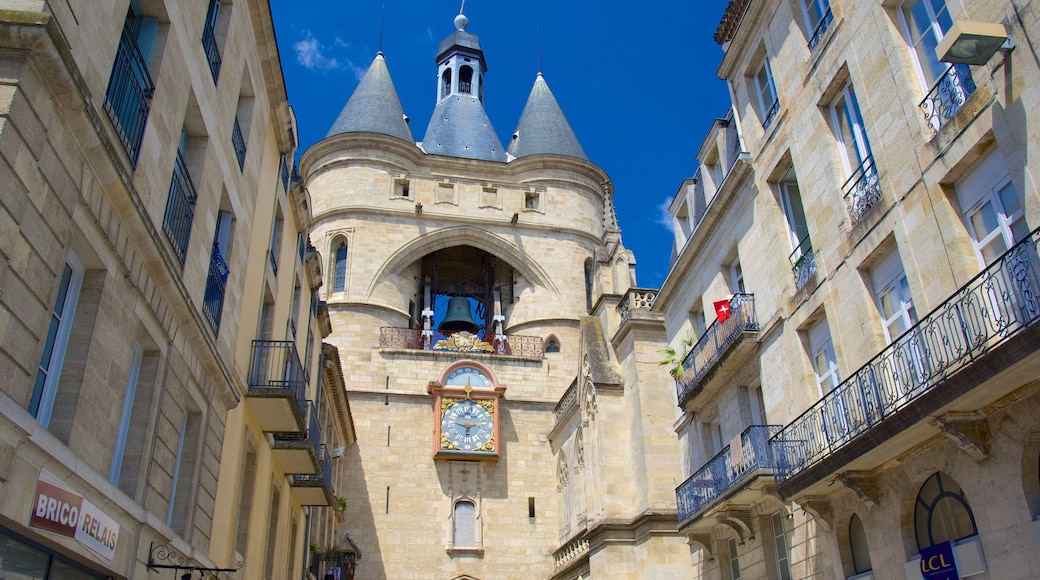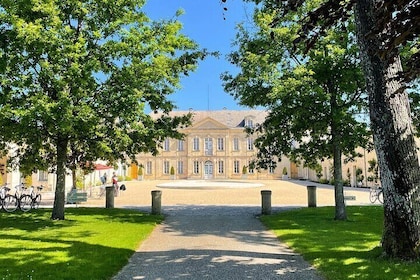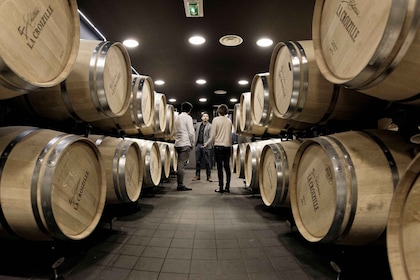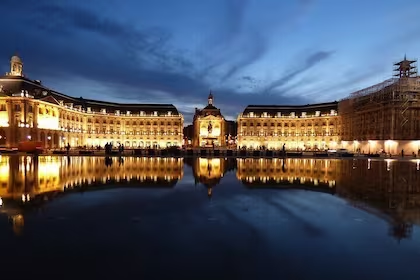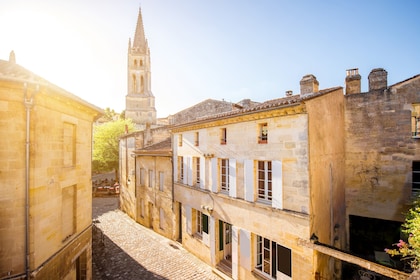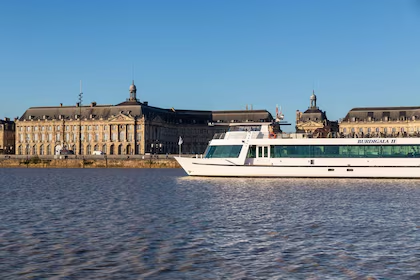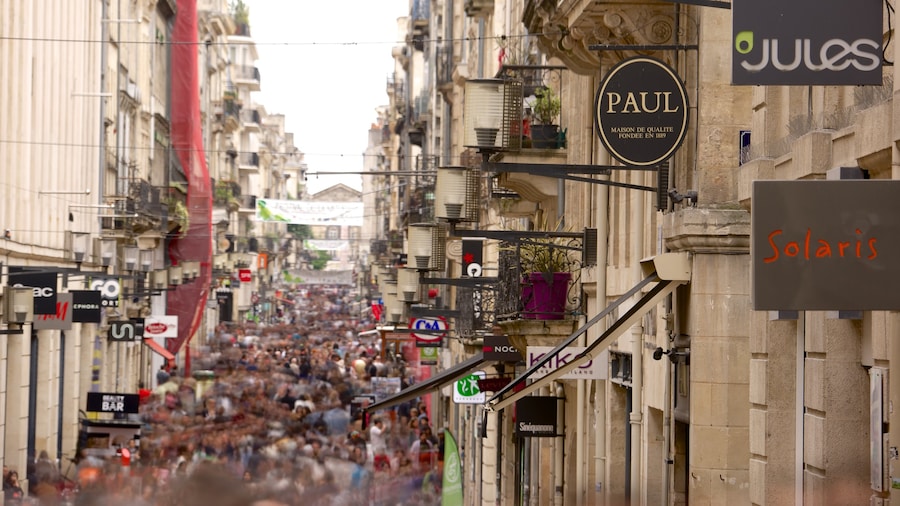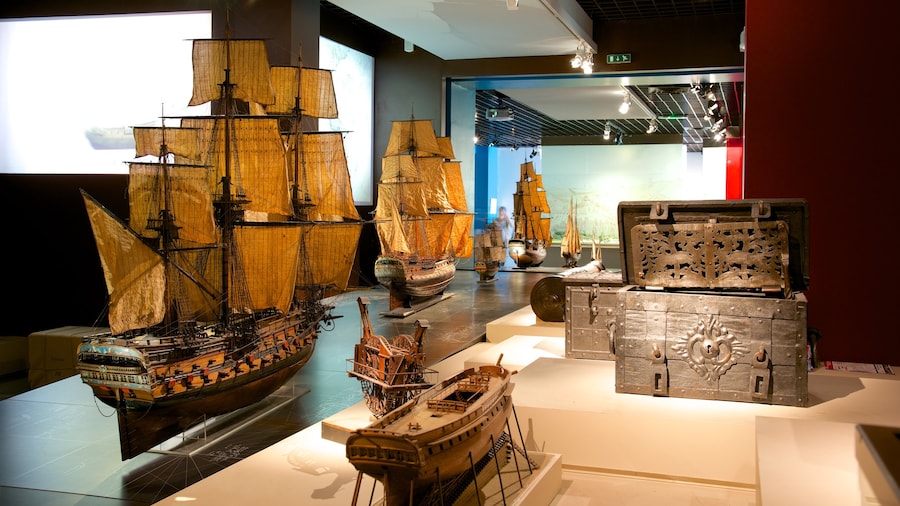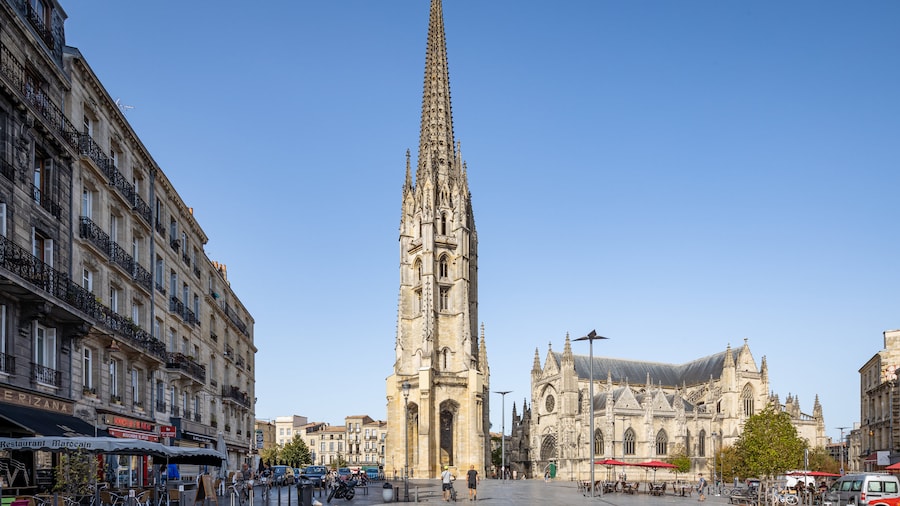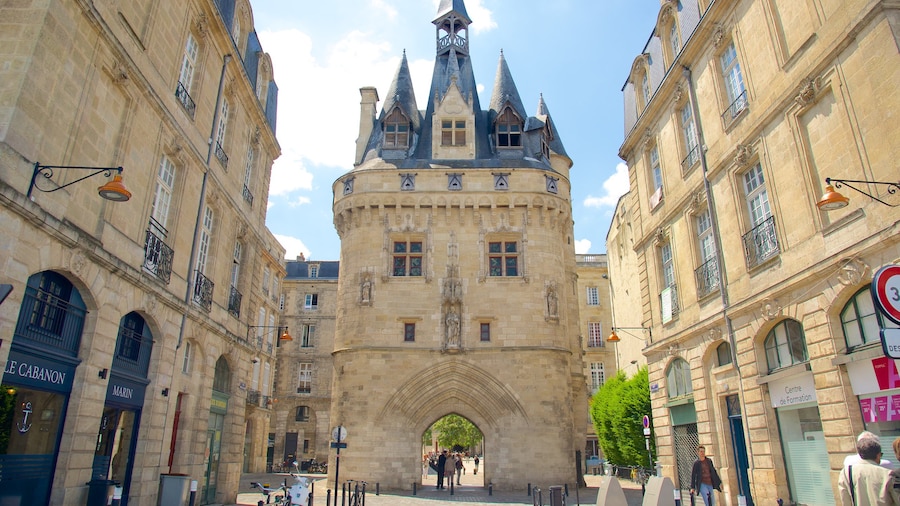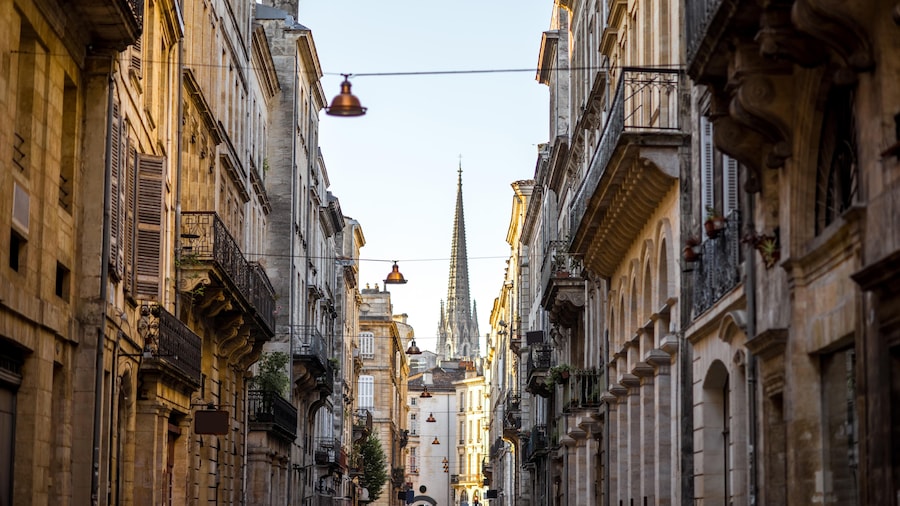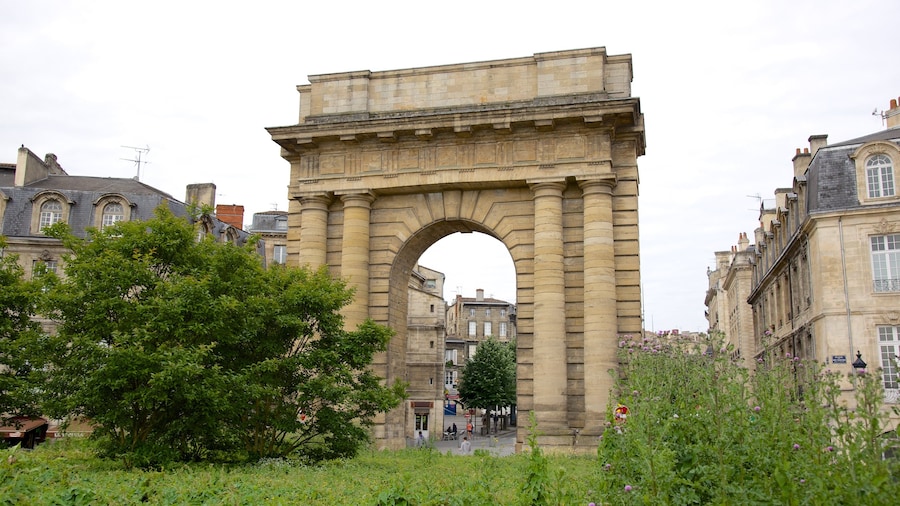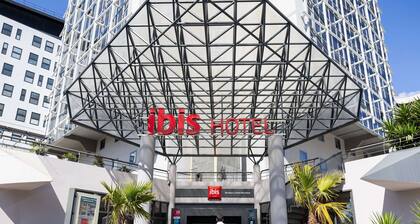The Grosse Cloche, a bell tower in the heart of Bordeaux, is a symbol of the city. This landmark is so iconic, in fact, that it is featured on the city's coat of arms. The famous monument is an extension of the Église Saint-Éloi, a 15th-century church hidden in an alley. Check the time on the tower's ornate clock or listen to the bells ring out on New Year's Day.
The Porte Saint-Éloi gate was built in the 13th century to allow entry into the center of the city. The belfry was added in the 15th century, although in 1548, the bell was confiscated by an irate king. The current bell was cast in 1775. Today it rings on the first Sunday of every month and an additional six times a year to mark major events.
Stand beneath the great archway and look up. Notice how two conical spires flank a smaller tower, on top of which stands a golden lion. This lion represents Britain's historical occupation of Bordeaux. Set your watch by one of the clocks that sits on either side of the belfry. On the south side, the gilded timepiece features a semicircular dial that notes the solar time. On the north side, an equally decorative clock marks the lunar cycle.
Climb the tower for a close-up view of the bell. The 8.6-ton (7.8-metric-ton) instrument, known as Armande-Louise, has an inscription around its edge that translates as “I ring for the hours and my voice is a call to arms, I sing for happy events and weep for the dead.”
Explore the interior of the towers, which were once used as a prison for the city's petty offenders, such as those who broke curfew. The adjoining church is also open to the public.
Take the bus to the Ste. Catherine stop to reach the Grosse Cloche or walk for 5 minutes from the Aquitaine Museum. Visit on the first Sunday of the month or on one of six major holidays in the year, such as Bastille Day or Remembrance Day, to hear Armande-Louise ringing at 11 a.m.
